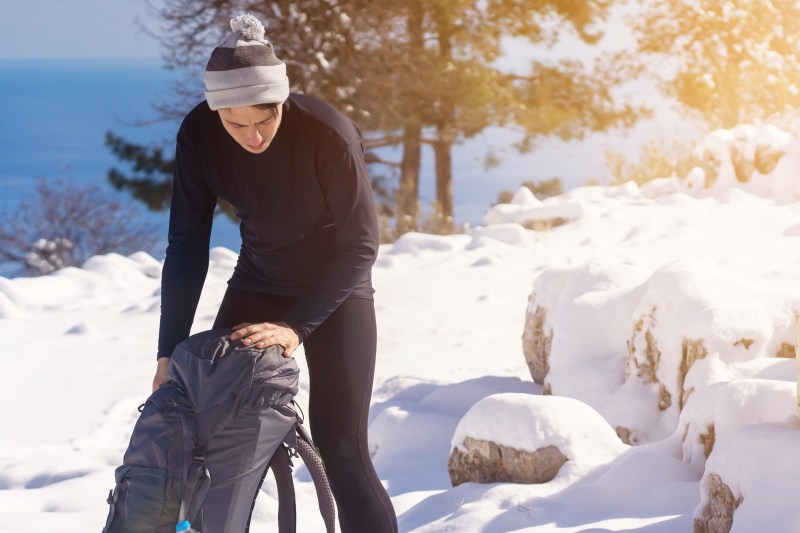If there is one thing that every good outdoorsman knows, it’s that layers are key to dressing yourself in the winter. From your feet to your head, layers trap heat and manage moisture to keep you warm and dry. Or do they? Well, as with all of these things, they do if they’re done right, and that means having the right layers. But does the hallowed merino wool really matter as much as people say?
Well, yes, actually, it does. You might be thinking about all those times you went skiing in a cotton t-shirt and hoodie and got away with it, right? And cotton thermal underwear is a thing, too, right? Yep, right on both counts, but it doesn’t make it suitable for skiing, snowshoeing, winter hiking, or any other activities. Let me tell you why.

It’s awful cold in winter. That much is pretty obvious, so let’s start with the insulation benefits that wool has over its rival materials. Wool fibers are crimped — they have a wavy pattern along their length — which allows them to create lots of pockets of air when they’re packed together. Merino wool fibers are much finer than those of normal wool and even wavier, so even an apparently thin layer of merino has loads of those insulating air pockets.
It’s these thin fibers that allow companies like Outdoor Vitals to make merino wool baselayers so thin and lightweight — they have a merino hoodie that weighs just over five ounces! All that weight-saving warmth lets you move more freely and layer more effectively on the mountain, which brings us to our next and arguably more vital point.
Cotton is a great way to soak up water if you’re ever short on a sponge.
But it’s not so great if you’re trying to stave off hypothermia. In fact, it’s downright dangerous. Cotton kills, remember.
See, any moisture that has soaked into your layers — either from you sweating into them or from the snow — may not notice too much while you’re active, but once you stop, that moisture is all going to cool down quickly. In turn, your body will cool down quickly and struggle to retain heat, all while your clothing draws heat from your body because, unlike wool fabric or synthetic materials, cotton is not warm while wet.
Wool, and in particular merino wool, is a living fabric that actively absorbs and dispels liquid — think of how much of this it has to do while it’s still on the sheep! Impressively, wool goes even further than this, though, and can control the rate of liquid expulsion to suit the environment and how much heat you’re putting out, helping you to retain energy.
Want even more? Okay, how about the fact that a reaction within merino itself actually generates heat while it dries? Sounds like something out of science fiction, but it’s true. On your ski touring day, when you stop at the top of the mountain after that intense climb to remove your skins and put them back into your bag for the descent, your merino wool long underwear is actively warming you up as it dries. Meanwhile, a cotton layer would be drawing all the heat from your body and putting you at risk of hypothermia. This merino wool is sounding pretty good, right?
I’ve got thermal pants made from merino, merino wool baselayers, a merino wool insulated jacket, and even merino wool boxer shorts – trust me on this one. I still wear the odd synthetic insulation layer, but only if I’m going out for a short, sharp burst of energy on a warmer winter day — I find they breathe slightly better during activity, but they definitely don’t dry as well when you stop so I don’t use these for ski touring or hiking, more winter trail running — or if it’s an unseasonably warm day. Ninety percent of the time in winter, you’ll find me in my merino.
What you’ll never find me in is cotton, and you shouldn’t be either.
Editors' Recommendations
- These new updates make the Apple Watch a hiking must-have
- Winter may never end! Here’s how to snowboard in spring the right way
- Is the long ski and snowboard season all due to climate change?
- Watch as this skier saves a snowboarder stuck in deep powder
- Throwback video shows the origin of tensions between skiing and snowboarding




